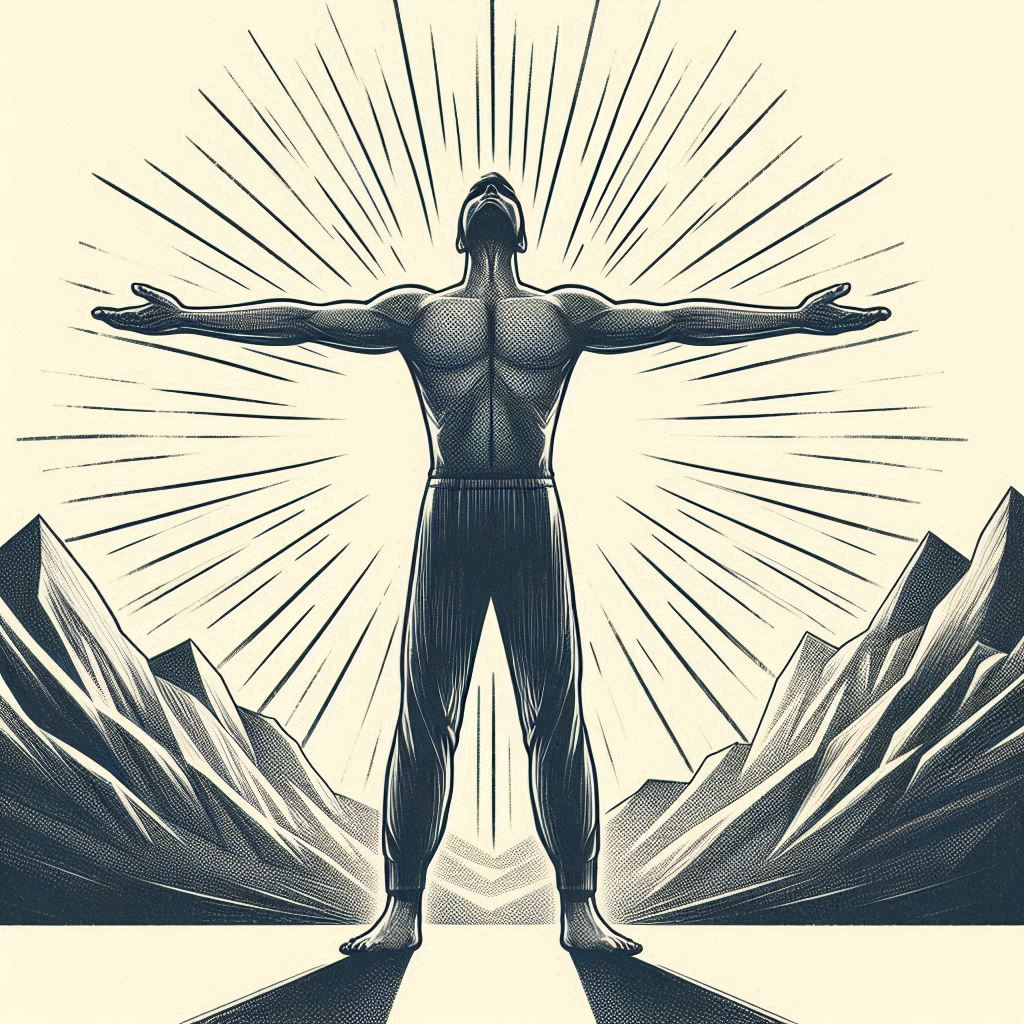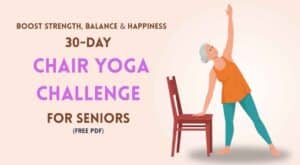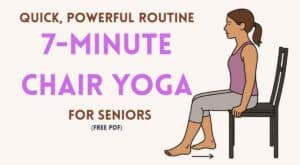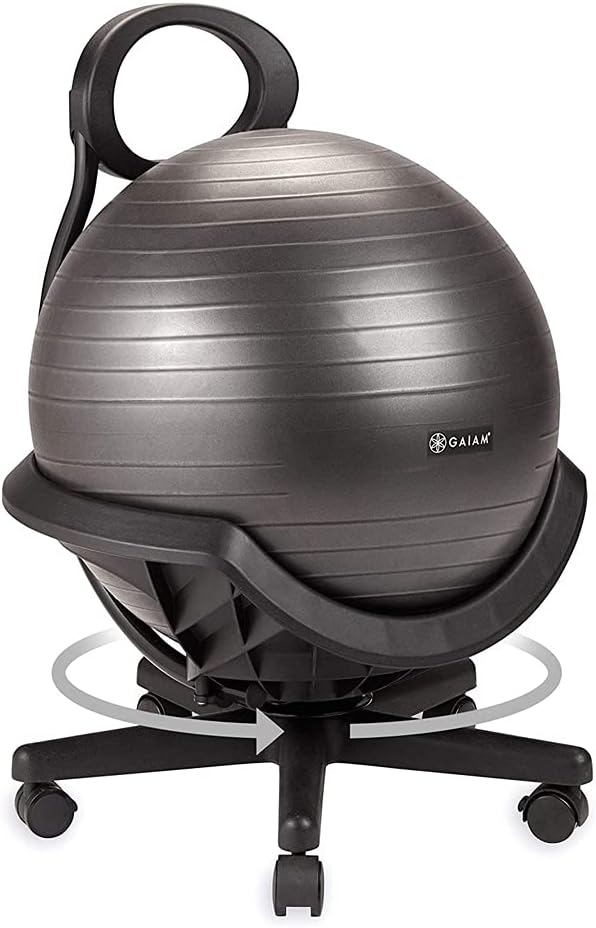The Extended Mountain Pose, also known as Utthita Tadasana asana , is the base of all yoga postures and is often ignored because of its simplicity. This yoga pose is far more beneficial than a basic stretch.
This yoga pose offers multiple benefits, including both physical and mental benefits. In this article, we will discuss the extended mountain pose that provides balance and strength to your body.
Table of Contents
History of extended mountain pose
Yoga has been practiced in India for thousands of years, and many poses were invented there. Extended mountain poses have roots in India’s ancient times. The extended mountain pose, or mountain pose, is often used as a starting pose for all of the yoga poses. This means this pose is a base pose of yoga.
Step-by-step ways of doing extended mountain pose
- Starting Position: Starting with Tadasana (Mountain Pose). Keep your feet together and your arms by your sides.

- Grounding the Feet: Keep your foot strongly on the ground, ensuring a good foundation, because if your feet are not in a good position, this may lead to an injury. That injury will cost you badly. Make sure you are under the guidance of a certified instructor.

Engaging the Core: Keep your belly button stiff, which means you have to tighten your core. When you perform any yoga asana, you will always keep your belly tight (that means your core), as mentioned in the below image.

Lifting the Arms: You must inhale deeply and then raise your arms wider than your shoulder. Inhaling and exhaling are the most important parts of yoga. When you inhale and exhale during yoga or any workout, your cells get an adequate amount of oxygen, which means you are less prone to injury.

Lengthening the Spine: Straightening your spine helps you stay in better posture. Posture is also most important in the yoga asana. If you have good posture, then the yoga asana that you will perform gives you all the benefits. If the posture is wrong, then it will not give you benefits; it will only cause you injury.

Maintaining Alignment: Make sure that your shoulders are relaxed, your spine is straight, and you are inhaling and exhaling during the whole session.

Breathing: Focus on your breath. This will help you maintain the mind-muscle connection throughout the whole yoga session. This will help you achieve your goals quickly.

Physical Benefits
- It improves the posture of your body. Which cannot be improved by any exercise.
- It can enhance body balance, which is beneficial for all exercises.
- It can strengthen your core muscles, which are beneficial for the development of the abs muscles.
- It can increase the flexibility of the body. When you have flexibility, you are less prone to injuries.
Mental Benefits
- It increases mindfulness and presence of mind. When we inhale and exhale during the yoga session, it calms our mind and reduces anxiety.
- It improves the blood circulation in our body. When blood circulates normally in our body, this will help lower the blood pressure.
- It improves our confidence as we practice straightening our spine, which helps us remain in good posture, and good posture is the key to confidence.
7 kirtan kriya benefits Incredible
Somatic Yoga Exercises PDF
50+ Printable Chair exercises for seniors
Horse Yoga Pose Step-by-Step
Dangers of Yin Yoga for People with (Osteoporosis)
Is kirtan kriya dangerous
20+ Spiritual Dangers of Yoga
Top 10 Somatic Yoga Exercises
20+ Hot Yin Yoga Essential Poses
What is Yin Yang Yoga
10+ Kundalini Yoga Kriyas
The Extended Mountain Pose, or Utthita Tadasana, is a standing yoga posture that involves raising the arms overhead while keeping the feet grounded and the spine elongated. It emphasizes extension and alignment.
This pose improves posture, enhances balance, strengthens core muscles, increases flexibility, promotes mindfulness, reduces stress, and boosts confidence.
Begin in Tadasana with your feet together and arms by your sides. Press evenly into all four corners of your feet, engage your core, lift your arms overhead, lengthen your spine, maintain alignment, and breathe deeply.
Avoid overarching the back, raising the shoulders, and locking the knees. Maintain proper alignment by keeping the core engaged and shoulders relaxed.
Yes, beginners can practice this pose. Start slowly, focus on alignment, use props if needed, and practice regularly to build strength and improve balance.
Variations include the Chair Extended Mountain Pose for those with limited mobility, and the Extended Mountain Pose with hands in prayer for enhanced focus and balance.
In Hatha Yoga, it builds strength and stability. In Vinyasa Yoga, it maintains alignment in sequences. In Iyengar Yoga, it develops awareness and proper technique.
Research shows that yoga poses like the Extended Mountain Pose improve balance, increase muscle strength, enhance physical fitness, reduce stress, and improve mental health.
Advanced techniques include lifting the heels off the ground for a deeper stretch and combining the pose with other poses like Warrior I or II for a dynamic sequence.
This pose is powerful yet simple, offering numerous physical and mental benefits. Incorporating it into your routine can enhance your overall well-being and transform your yoga practice.
It’s recommended to hold the Extended Mountain Pose for 30 seconds to 1 minute. As you become more comfortable and experienced, you can gradually increase the duration.
Yes, the Extended Mountain Pose can help alleviate back pain by improving posture and strengthening the core and back muscles. However, it should be practiced with proper alignment to avoid strain.
If you feel discomfort, ensure your alignment is correct. Use props if needed, and avoid pushing beyond your limits. If discomfort persists, consult a yoga instructor or healthcare professional.











1 thought on “Power of the Extended Mountain Pose”
Pingback: How to do Tadasana Mountain Pose (2024)